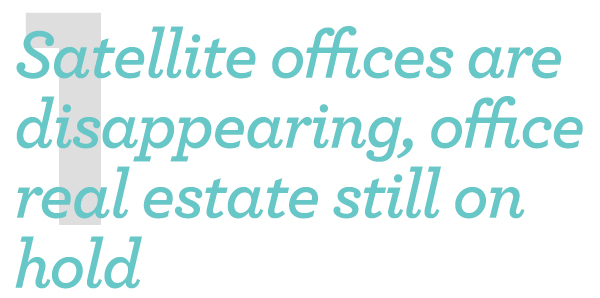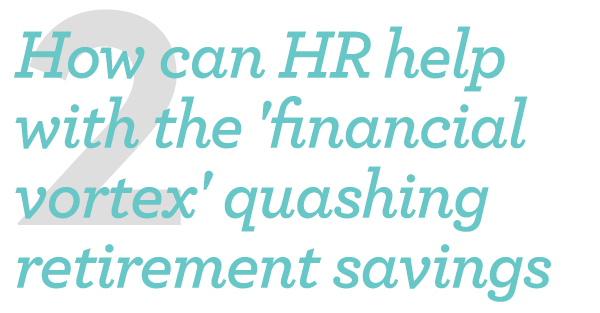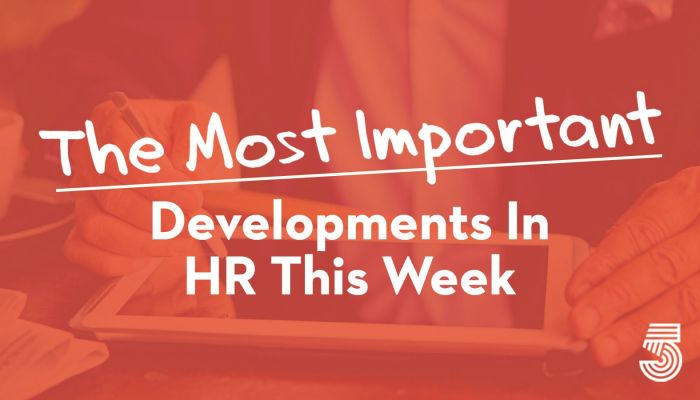The M.I.D., as we call it, is curated by our editorial team from more than 50 news sources. Like a lot of good ideas, this started as something I wanted for myself. If I can’t read everything, I at least want to stay abreast of the most important developments. This week in HR, real estate pros are predicting an office real estate apocalypse, employees are reeling because of inflation and a meaningful dip in retirement accounts, unsurprisingly, employee dissatisfaction is up, HR is shifting focus from hiring to retention, and company exec teams are focused on purpose. 

Even before the pandemic, companies were considering how to offer a unique office experience to their employees. In some situations, that meant repurposing existing space instead of building a new one. “There are companies who are more interested in being integrated into a community by lifting up a building that has been abandoned for a long time or moving into a historic building, rather than a new tower,” said Samantha Lewis, associate and interior designer at architecture firm Gensler. A September study by professors at Columbia University and New York University found that there was a 45% decline in office values in 2020 and 39% in the longer term, which represents a $453 billion value destruction. The authors say that the lower quality, less expensive office buildings will experience more volatile swings in valuation compared to higher quality office buildings. They’re predicting an “office real estate apocalypse.” Worklife


Confronted by a perfect storm of economic challenges, most employees aren’t saving enough for retirement because they are mired in what Goldman Sachs calls a “financial vortex.” And it’s information that makes clear HR has more work to do when it comes to helping workers improve their financial situations. That vortex, which is shaking employee confidence, includes several factors that Mike Moran, senior pension strategist at Goldman Sachs Asset Management, says are “beyond individual control.” Those include pandemic-related financial challenges, recent market volatility, recession fears, and soaring inflation, which has driven many employees to eliminate or decrease retirement contributions as they allocate their paychecks to other expenses. HRE


HR consultancy Mercer’s 2022 Inside Employees’ Minds study found that concerns over inflation have made financial health employees’ greatest unmet need, based on a survey of 4,049 full-time employees in the U.S. at organizations with more than 250 employees. The top three factors that would cause respondents to consider leaving their employer were: Insufficient pay. Nearly 1 in 3 employees making less than $60,000 per year said they’ve taken on additional work to supplement their income, the survey showed. Burnout due to a demanding workload. More than half (51%) of employees reported feeling exhausted during a typical day at work. Insufficient health care benefits. Sixty-eight percent of employees reported challenges with getting the care they need, with the top challenge being trouble affording costs not covered by health plans, such as deductibles and co-pays. SHRM


A new report suggests that the narrative of the Great Resignation may be shifting inside HR offices, according to the Lattice 2023 State of People Strategy Report. The report, which is based on a survey of 820 HR employees in a range of different industries and countries, finds that, though recruiting was professionals’ #2 priority last year, it dropped to 8th place this year. Instead, greater importance is being placed on retention efforts, with voluntary turnover ranked the most important key performance indicator. What retention measures are top HR companies putting into place? The report finds a variety of factors that unite successful teams, including investment in programs that employees care about; offering pay transparency; investing in growth opportunities, like coaching; and connecting compensation to performance. Benefits Pro


An effective, aligned, and committed executive team — the governance mechanism that shapes the story of an organization unlike any other team — is central to shaping and sustaining impactful corporate purpose. [But] it’s easy for leaders to want to jump on the purpose train to cash in. It turns out the world has quickly learned to see right through “purpose-washing” whereby leaders work hard to create the appearance of purpose. Marketers are pulling every lever they can to put halos over their brands and companies, spinning a narrative of goodwill. Employees and consumers aren’t buying it, though. One study of corporate purpose shows that while 84% of consumers consider trust when purchasing, only 34% actually trust the brands they buy from, and 53% believe companies purpose-wash. Leadership teams must craft a purpose so unique to your organization and aligned with its strategy that it compels people to act and perform in positive ways. HBR










